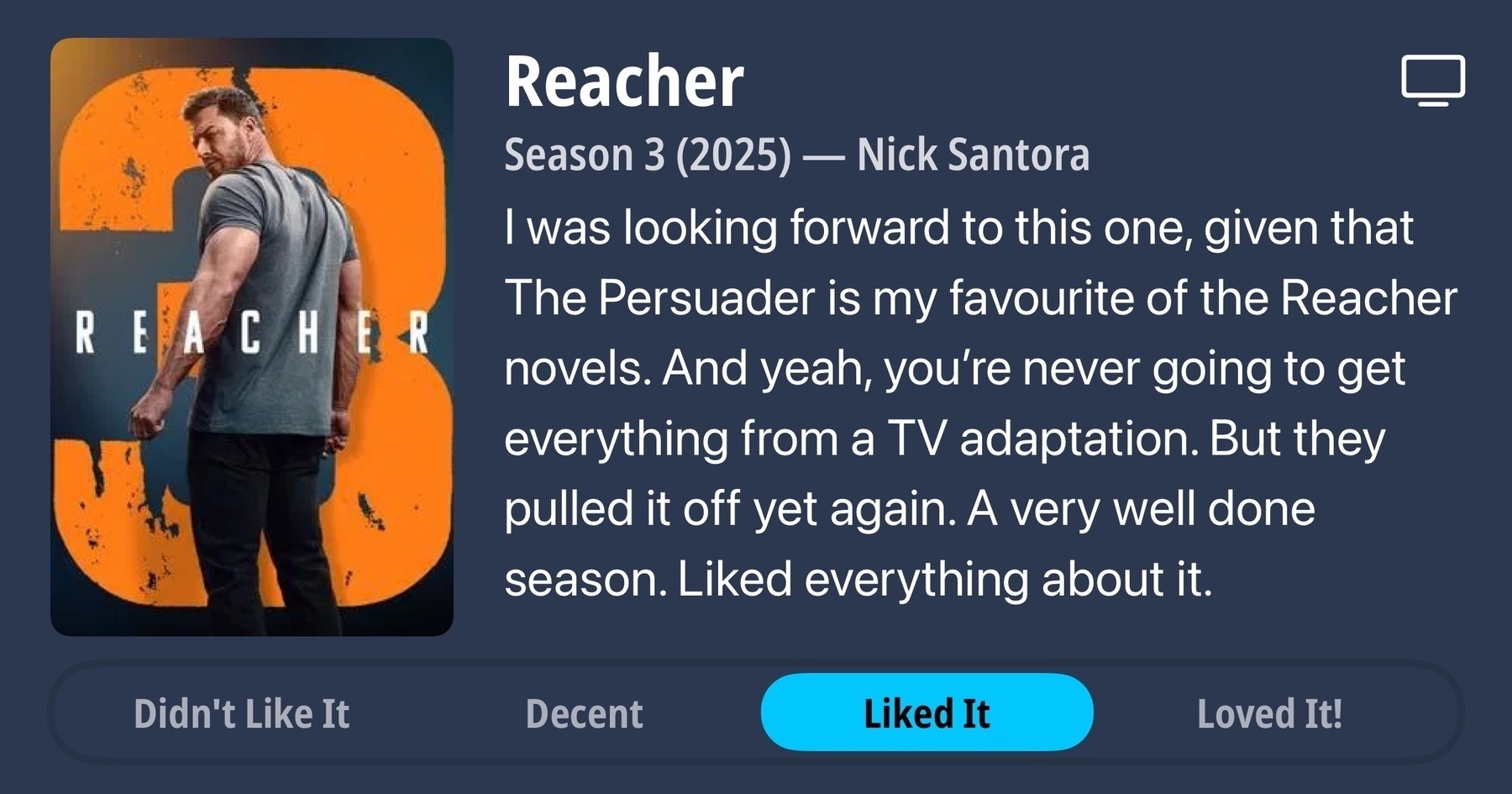-
This week’s earworm: Chronology, by Jean-Michel Jarre. 🎵

-
It’s telling that the word “stupider” is growing in our lexicon. I’m all for language evolving, but seeing this is just making online reading “painfullier” (10 points to anyone that gets this obscure ‘90s reference).
-
My trumpet playing skills are what got me into the strings section. 😄
-
Free B-movie idea: you have a large multi-national company, like one of the large tech coorporations. One day, the CEO is away for an extended period of time. They might be on leave or something, but it’ll need to be for a few weeks or more. During that time, a new hire that looks exactly like the CEO begins working there. They start doing their medial tasks until one time during lunch, one of the executives mistakes them as the CEO, and starts asking for directions about company strategy, etc. Well, you can probably imagine how it goes from there.
Maybe give it it title like “The New Hire” or “The New Job”1 or something, and boom! You’ve got a blockbuster summer hit on your hands. “Fun for the whole family.” 😄
-
Both of these are already the titles of real movies so maybe not these. Honestly, must be super hard for producers to come up with original titles these days. ↩︎
-
-
🔗 512 Pixels: A Fresh Coat of Paint
Stephen Hackett’s new site looks quite nice. Although I didn’t mind the orange, he’s right about the blue. I do wonder about using “Source Sans 3” for the body text; not sure it’s quite my cup of tea. But the rest looks quite nice.
Via: Mastodon
-
The Switch 2 looks pretty exciting. If I were ever to spend money on a game console, I’d probably go for this.
-
Tina Arena is a really underrated artist. Her music is really good.
-
Started working on world 2, and one of the main mechanics of this world: quicksand. It won’t kill the player directly, but it will make it difficult for them to manoeuvre, and getting too low could cause death. Might be one of the more annoying mechanics in the game, but that’s kind of the point.
-
The results of my first play-test are in. And overall, they were pretty positive: movement was good, hit-boxes were fair, and it was described as “quite fun,” which was better than I was hoping for.
One thing I’ll need to look out for is telegraphing secrets. The number of secrets is indicated at the end of the level, and based on the play-tester’s feedback, they seemed to have spent a lot of time running against walls trying to find them. There is one secret in the level 1-1 that I thought was telegraphed well, and I can confirm that the player found them all. But I will concede the others required the player to make a leap of faith, and fall into an area that the player will usually want to avoid, which is pretty unfair. So I’ll need to fix that.
-
Ugh, dealing with financial institutions is so annoying. Forms, solicitors, settlements; everything’s more complicated than it first appears.
-
🔗 How to create an animated tile in Godot 4's tilemaps
Useful tutorial for creating animated tiles. You don’t need to use animated sprites to do this. It can all be done using tilesets.
-
Apple’s style of public writing is so grating. I’m sorry, but seeing thoughts written in a way to suggest that they’re made by someone who is “just a regular person” comes off as patronising when it’s backed by a three trillion dollar company. I just can’t suspend disbelief in thinking that these are genuine, off-the-cuff comments.
-
Saw my barista put a few coffee beans in the chocolate shaker when he refilled it this morning. He says that it helps break up the clumps of chocolate powder that form near the bottom. That’s brilliant! I’m going to do this when I get home.
-
Got some answers about the recent train shutdown. Reason why busses couldn’t run from our station had nothing to do with the overhead lines. It was just logistics; turning the busses around was easier to do at the station they did run from. Okay. Interesting to know that.
-
As described by sod on Micro.blog:
It’s just people (not algorithms) sharing what they love. Hanging out there usually puts me in a good mood.
An apt description. I also like the ’90s early-web vibe they’re going with.
Via: Reply on Micro.blog
-
Flexoki is an inky color scheme for prose and code. Flexoki is designed for reading and writing on digital screens. It is inspired by analog inks and warm shades of paper.
Always on the lookout for nice colour schemes, and this one fits the bill.
Via: Mastodon
-
They used our building, so now we’re using their typeface.
This looks good: a font based on tags used by vandals. I have no need for this now, but who knows what the future may bring?
Via: Mastodon
-
Origami is a new programming language that complements HTML and CSS for making small- to medium-scale websites.
This certainly looks intriguing.
Via: Mastodon
-
🔗 Ente - Private cloud storage for your photos, videos and more
Might be a suitable system for my photos should I want to get off Google Photos.
Via: Mastodon
-
🔗 YouTube: Replace batteries numpad Sculpt Ergonomic Desktop
It’s surprisingly complicated to open up the battery compartment of the Sculpt number pad. This video proved to be very useful.
-
TIL: CR2420 button batteries are not the same as CR2032, no matter what your eyes say to you.
-
🔗 Incomplete JSON Pretty Printer
This looks pretty useful. Requiring JSON to be syntax correct prior to formatting it is a huge pain.
Via: Simon Willison
-
I’ve started keeping links to interesting posts and software packages on a separate link blog. These links would usually go into my Linkding instance, but I may repurpose that for things I’d like to revisit later, whereas this site will be more of an archive of things I’ve seen.
-
This site, now served from Europe. 🇪🇺
